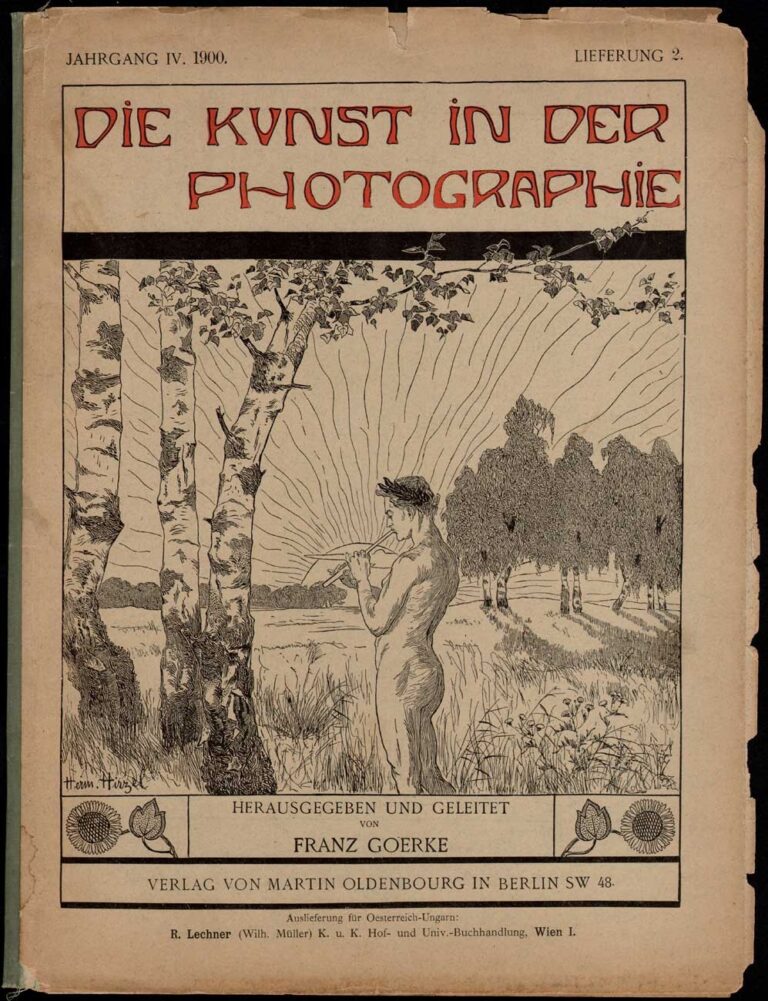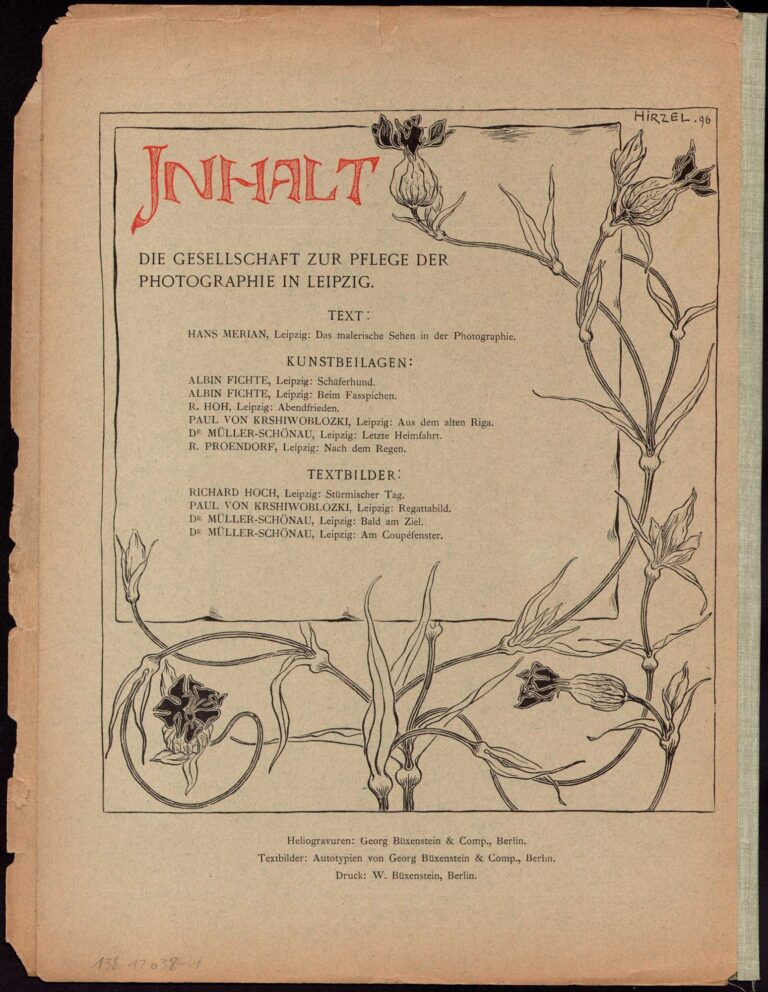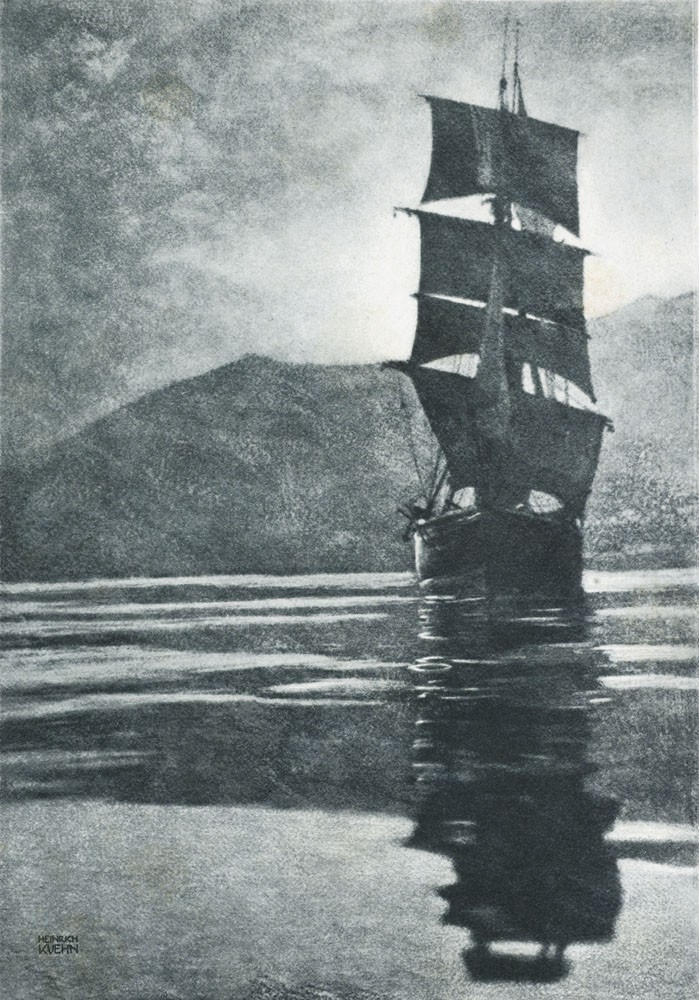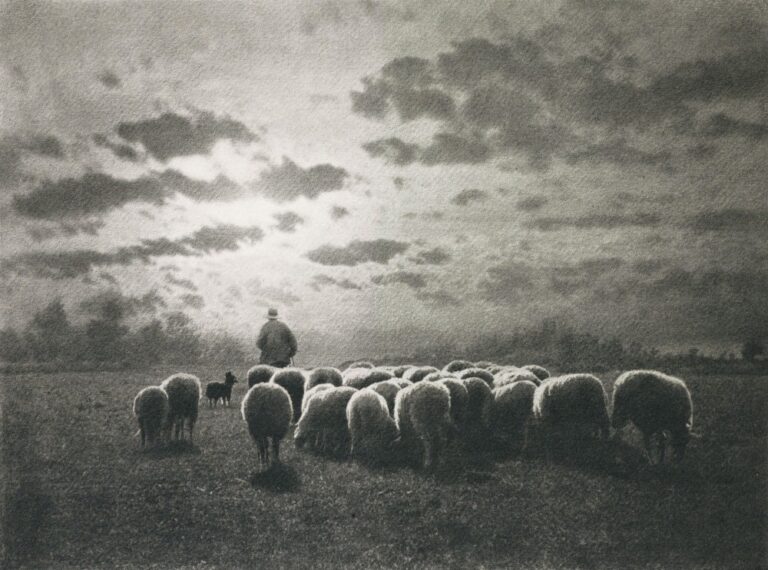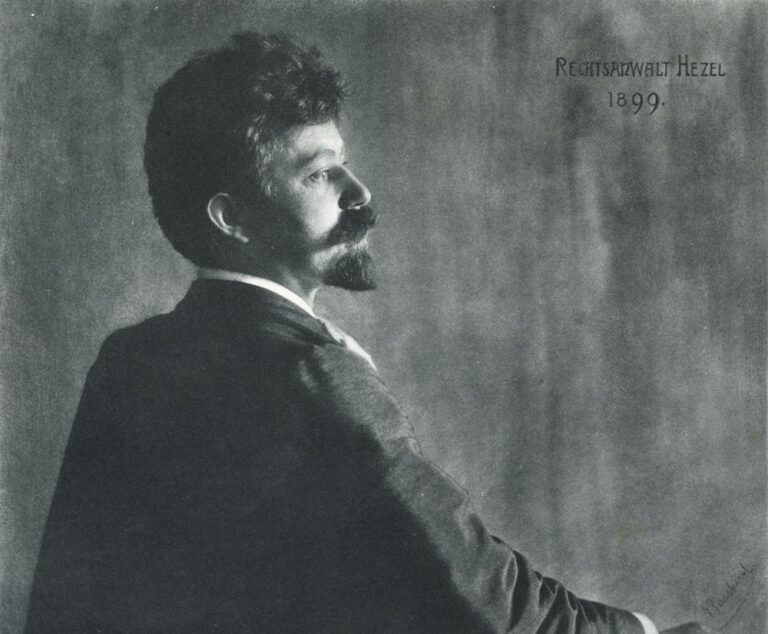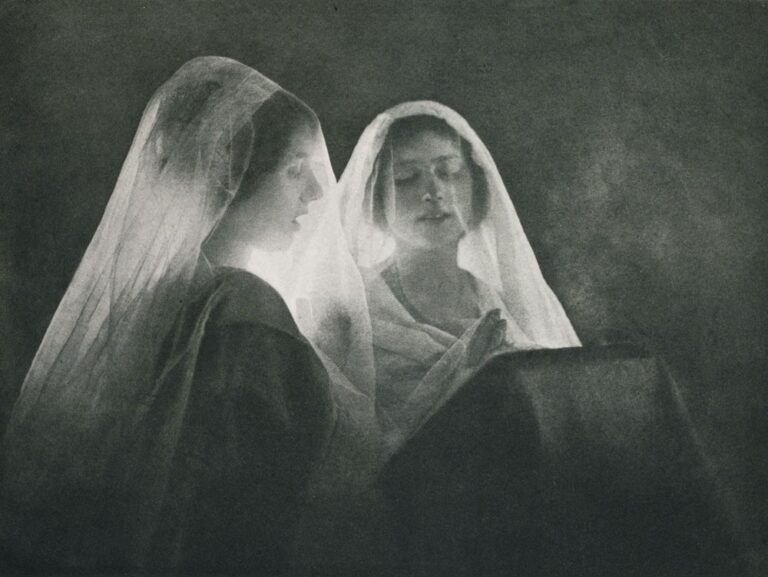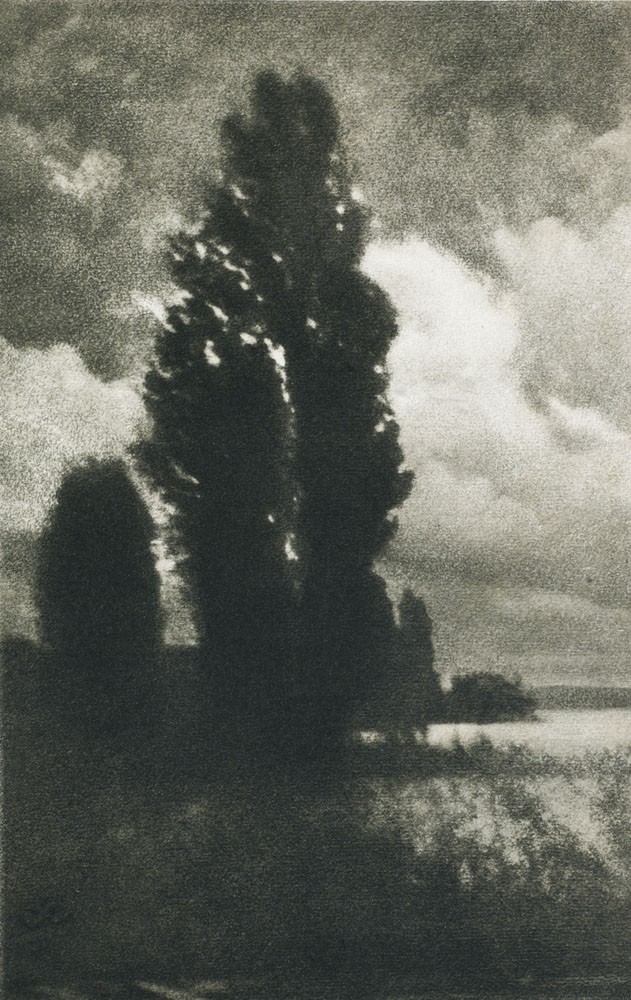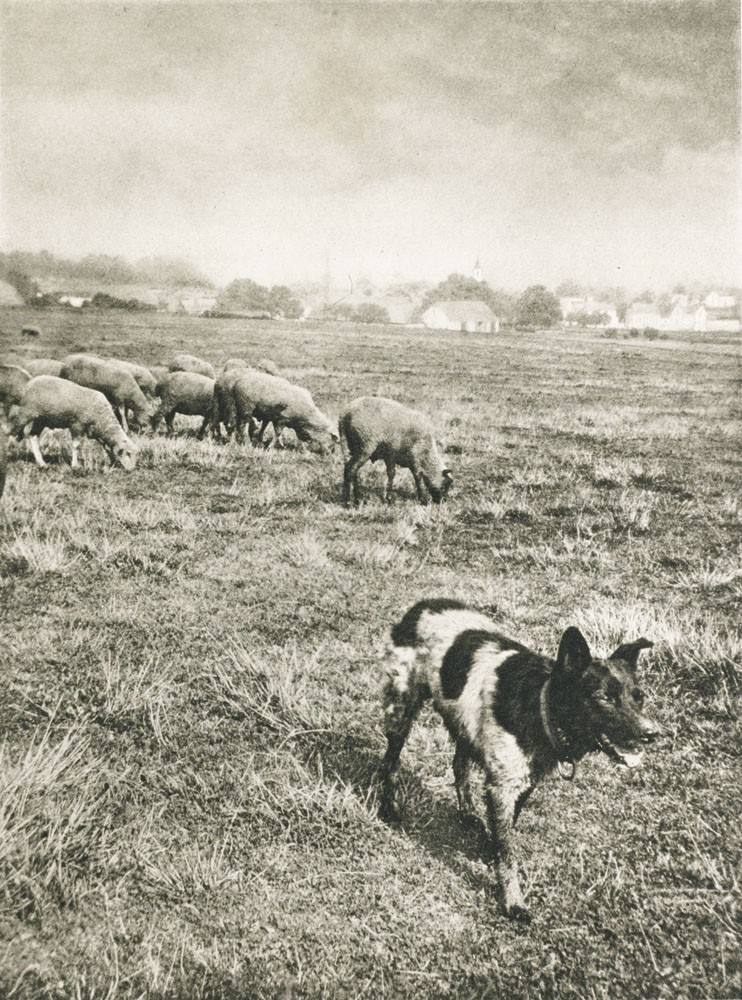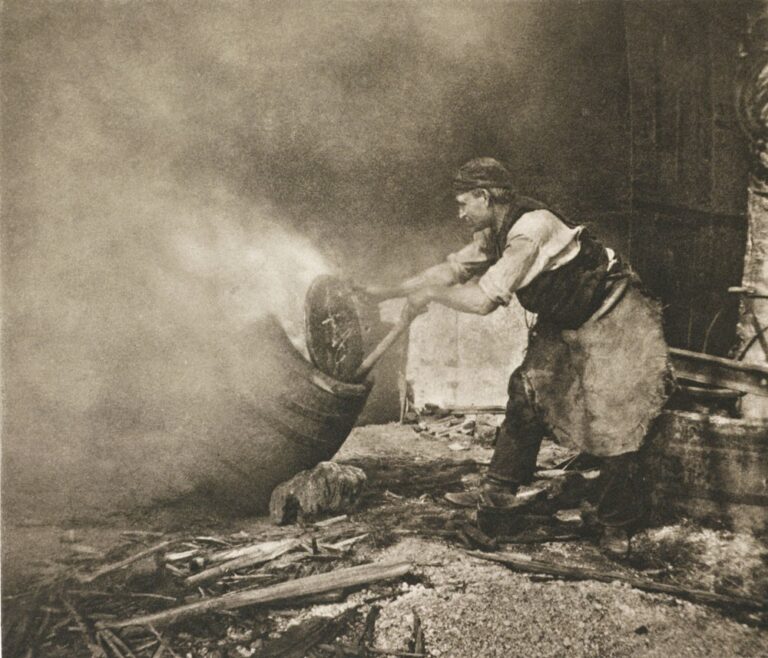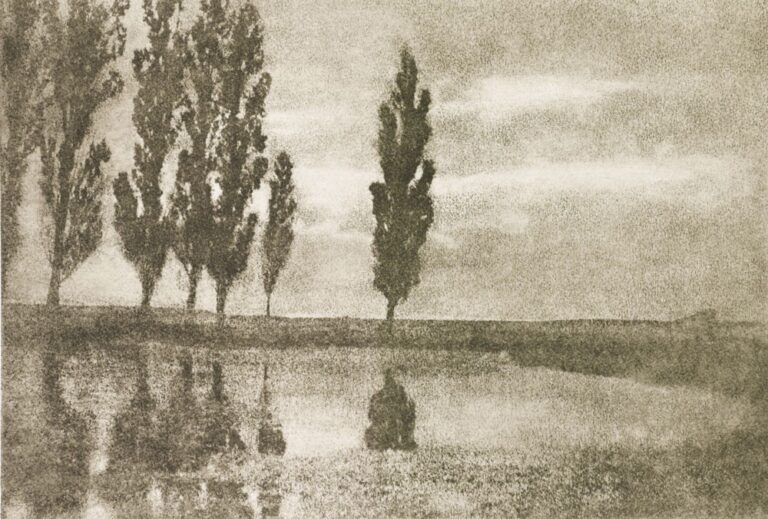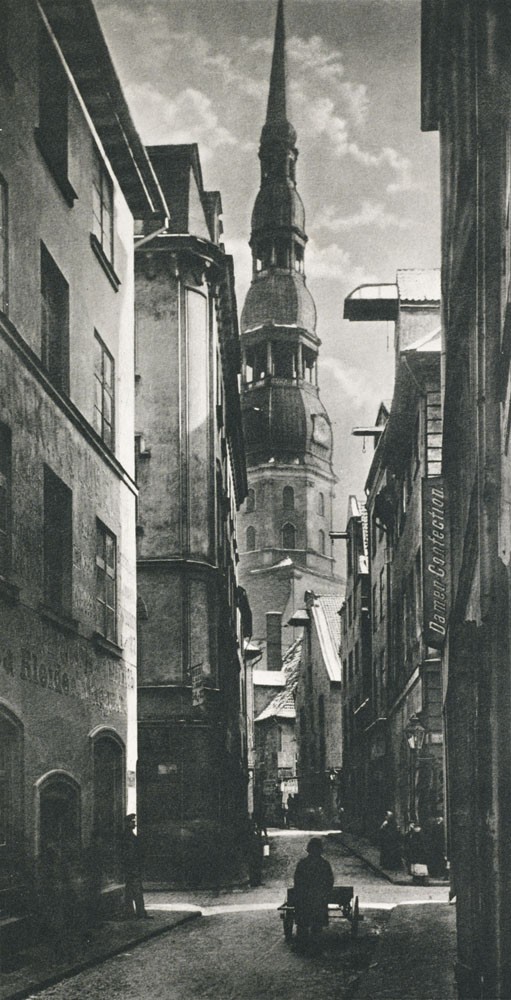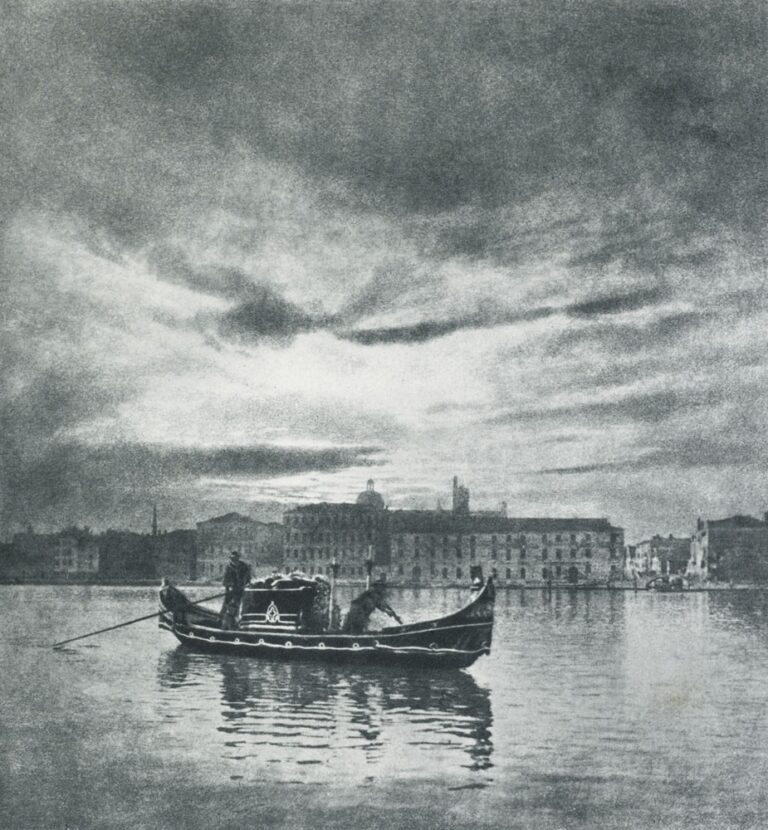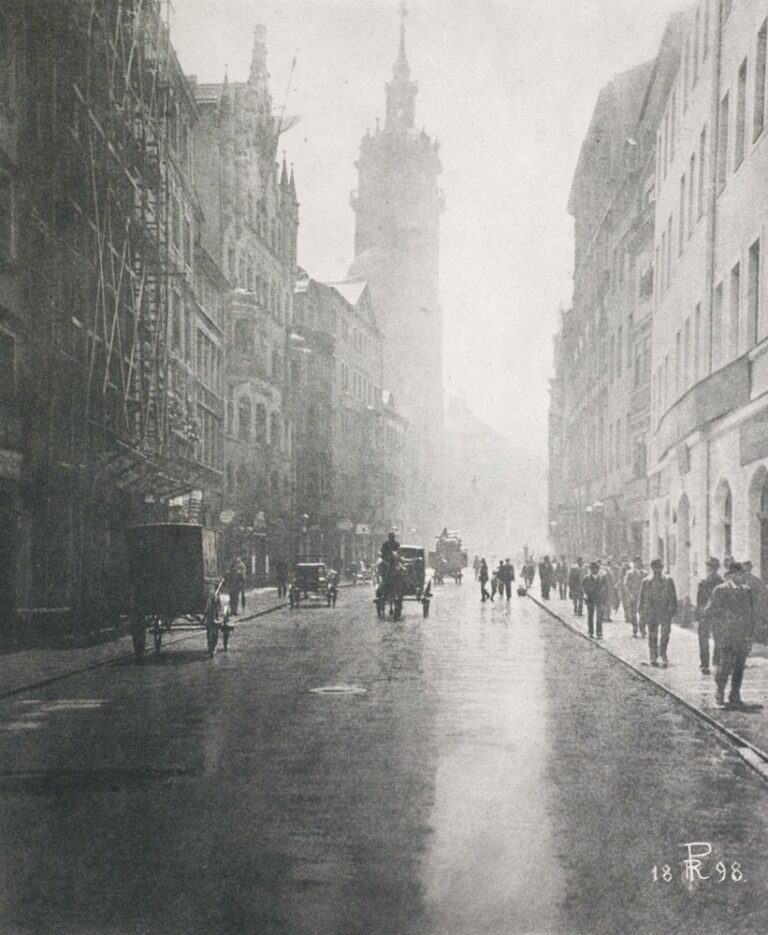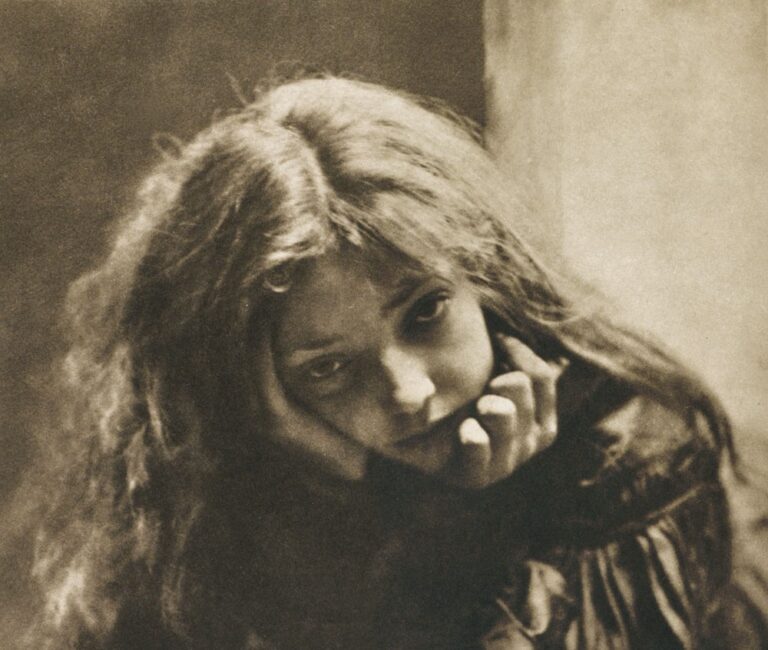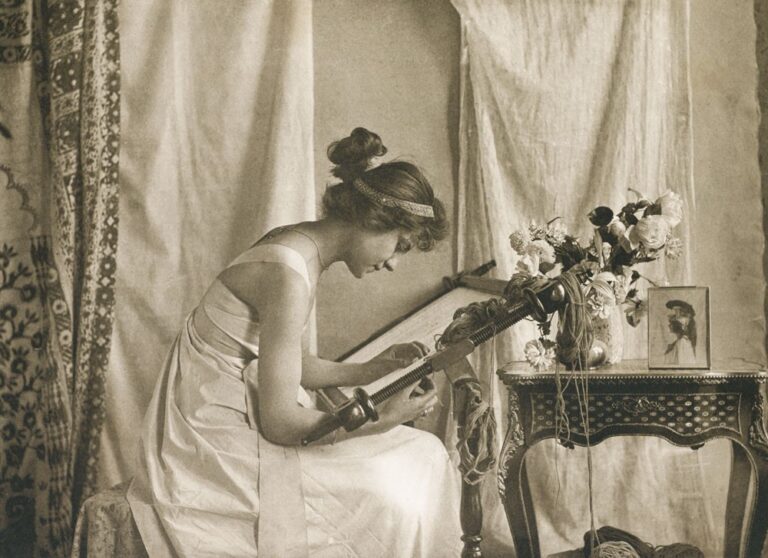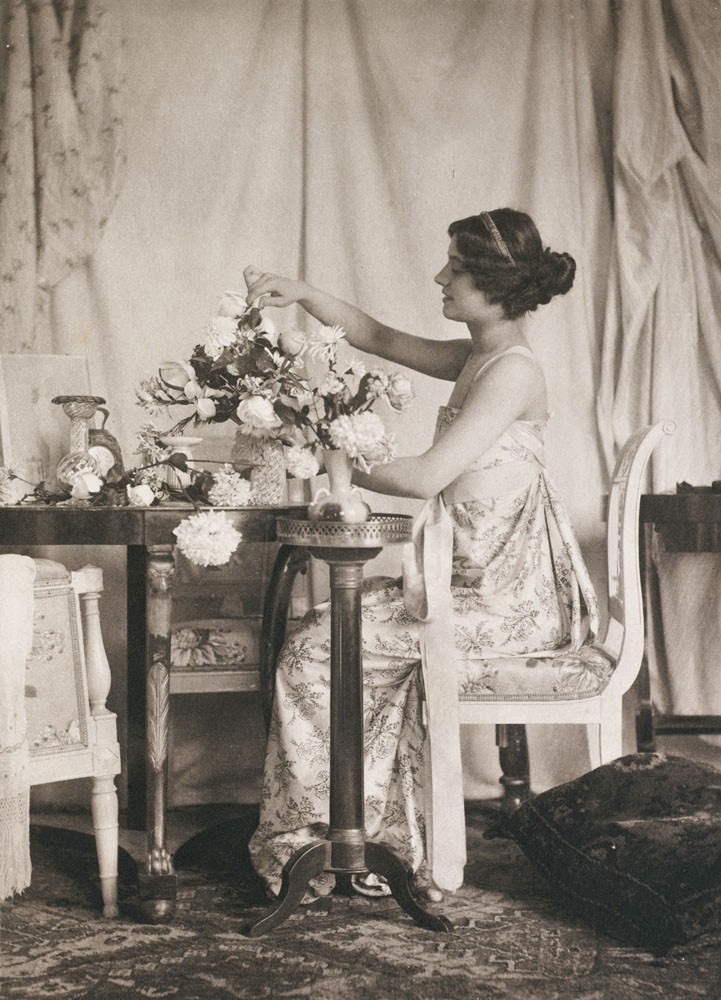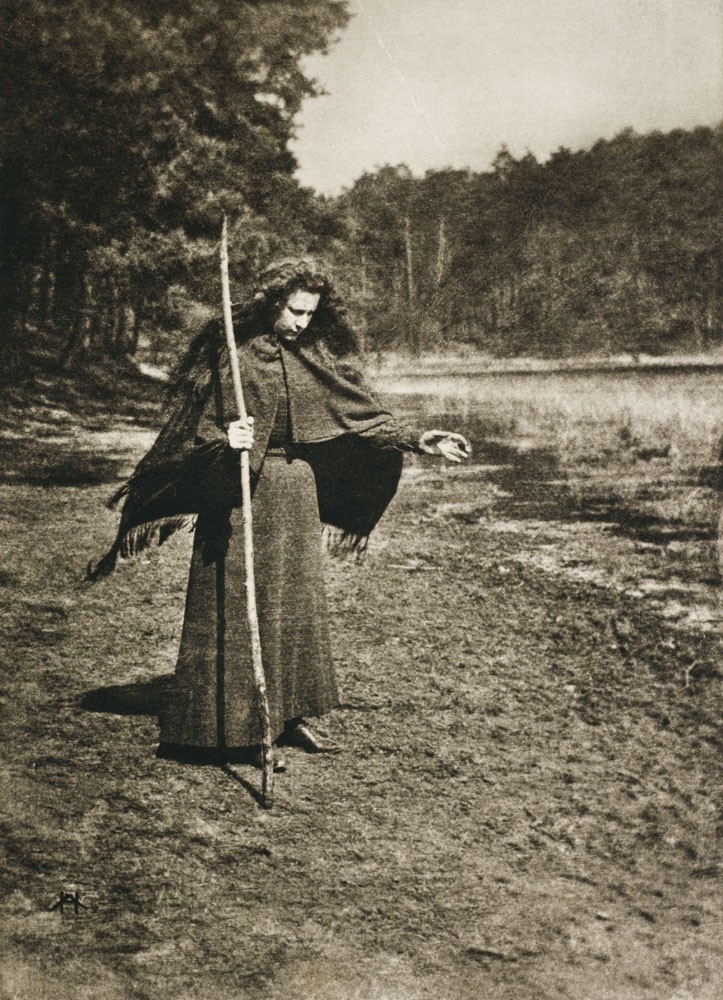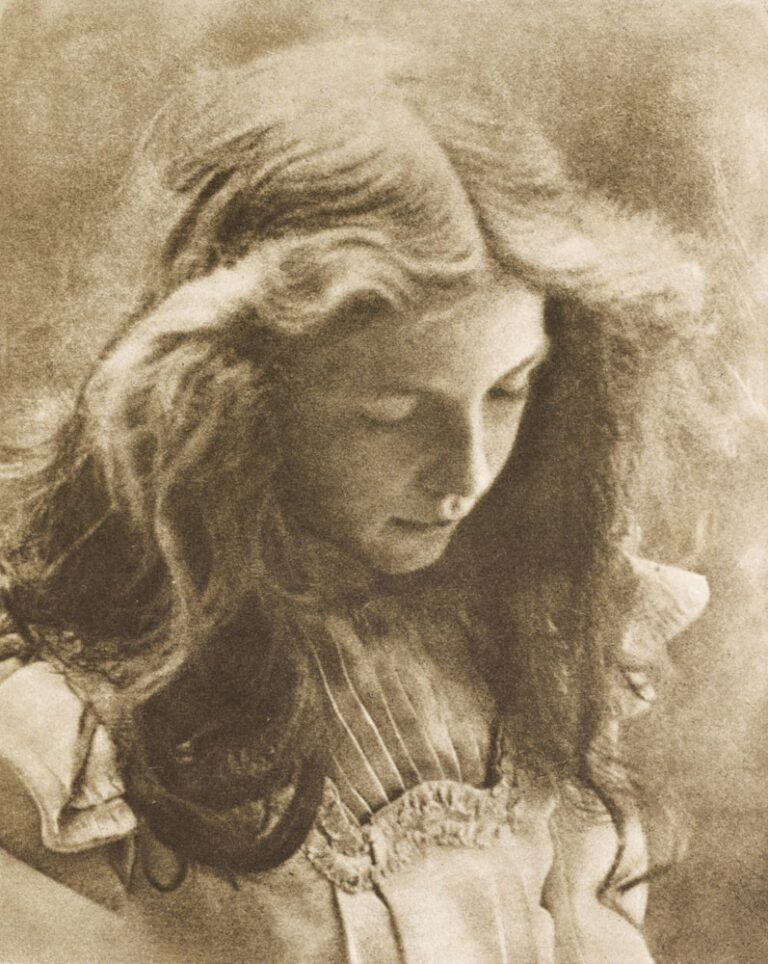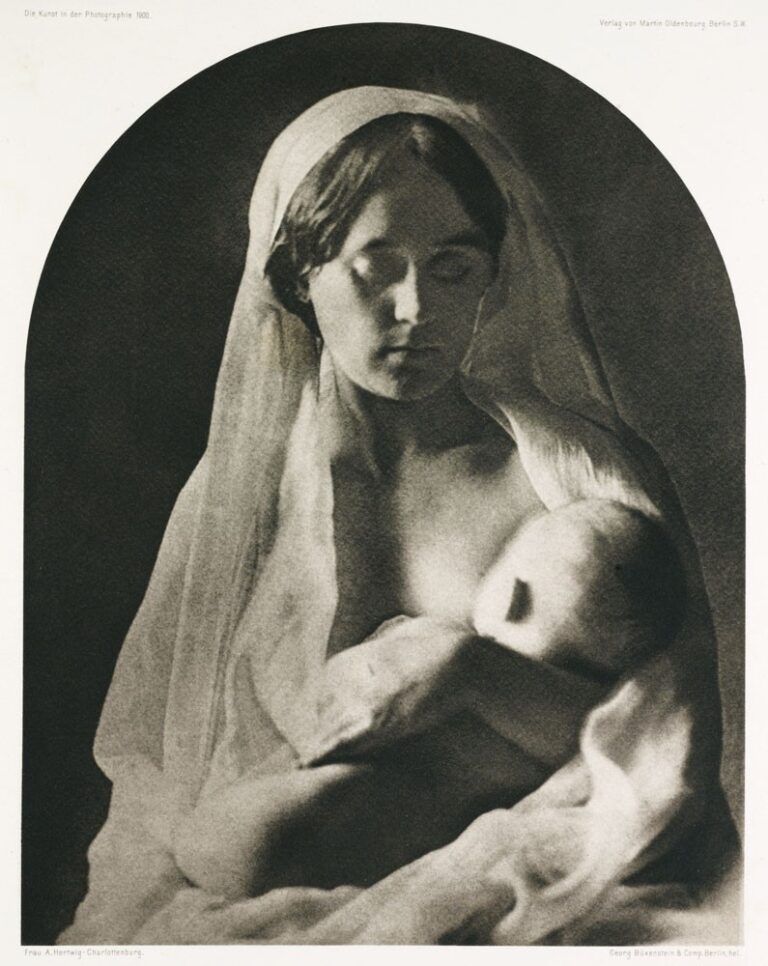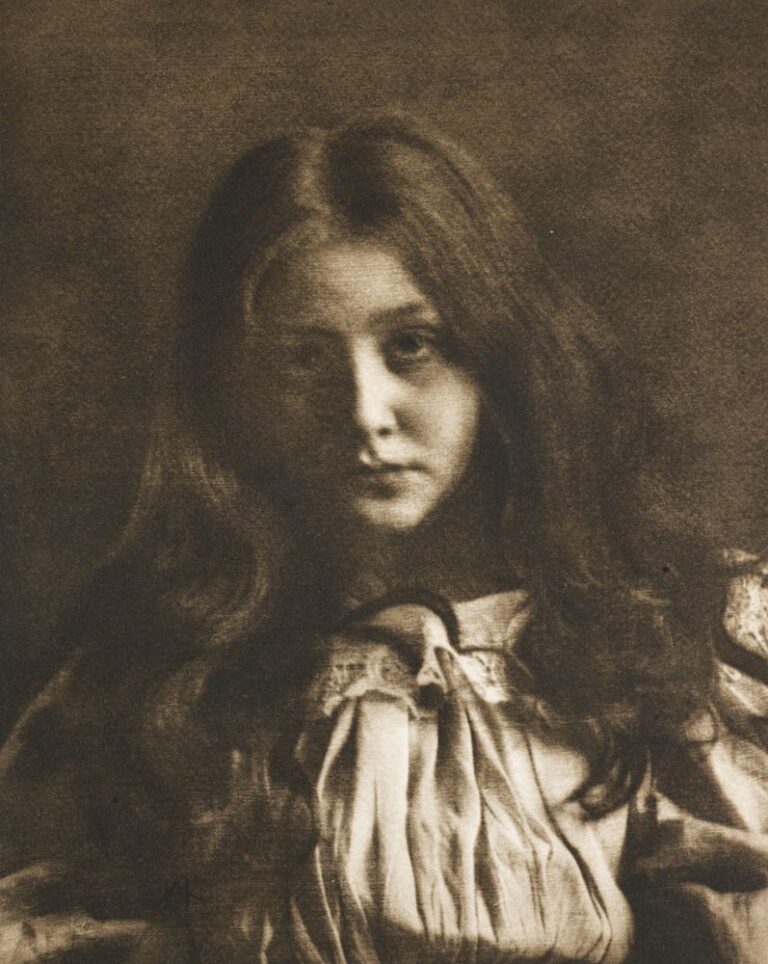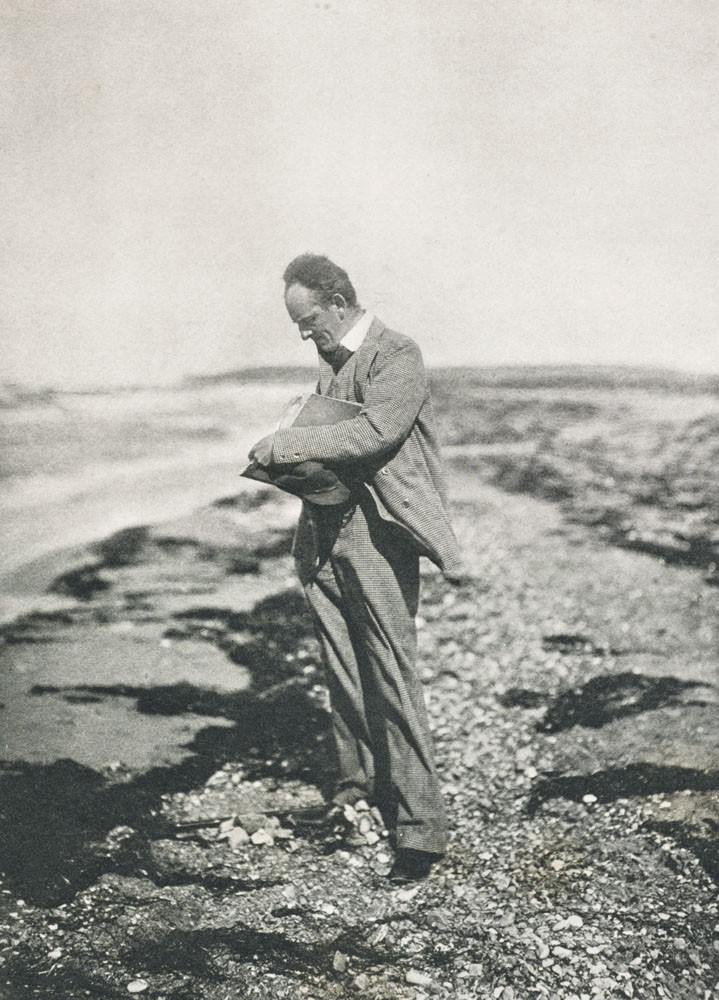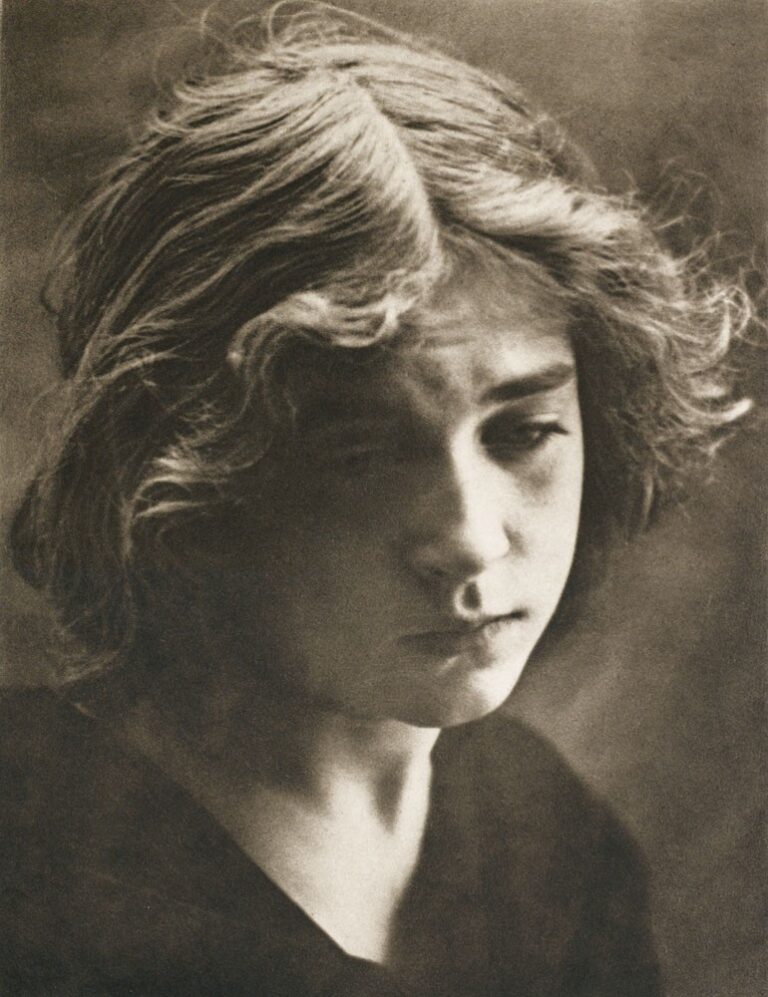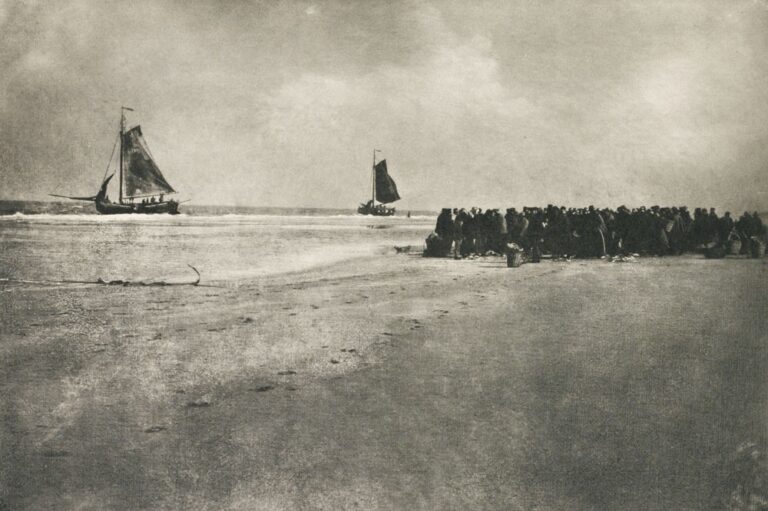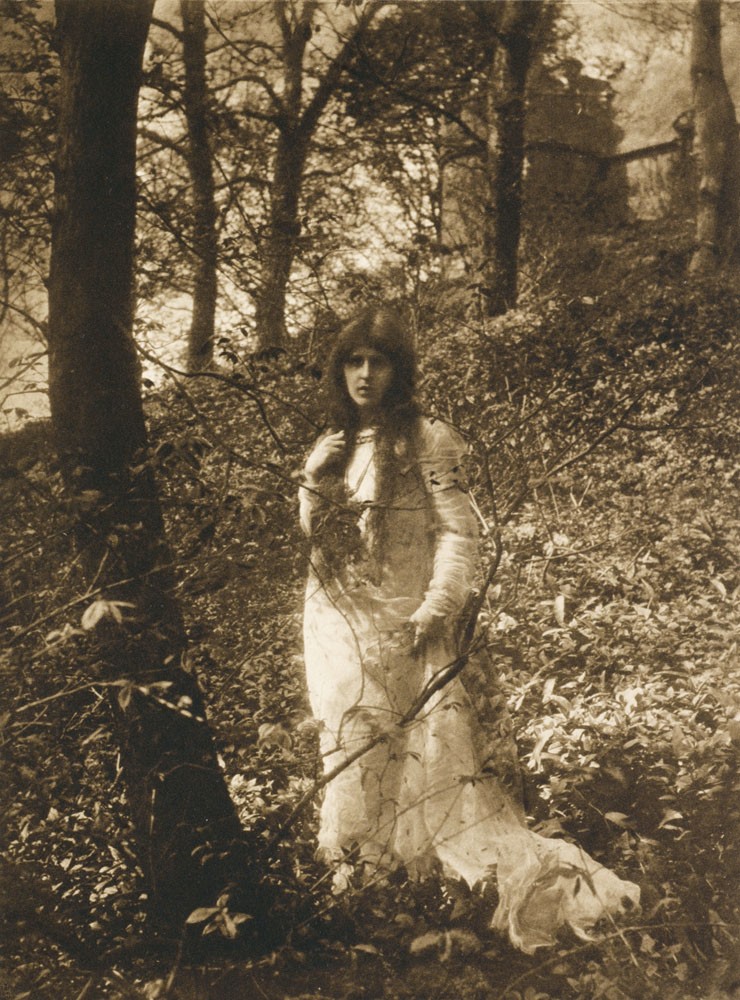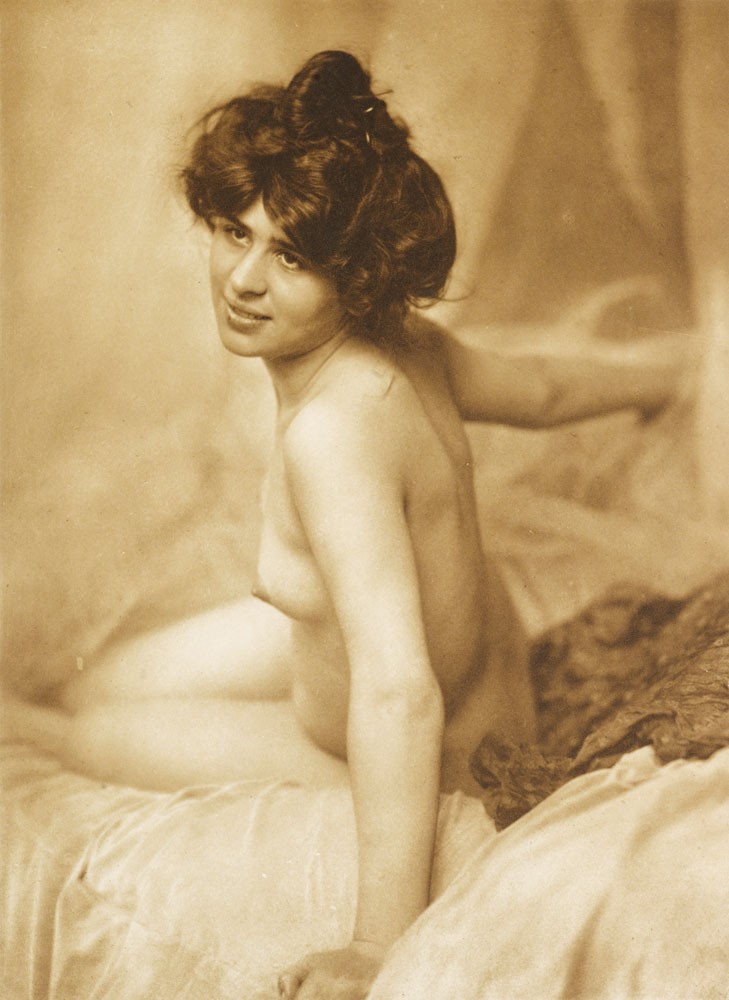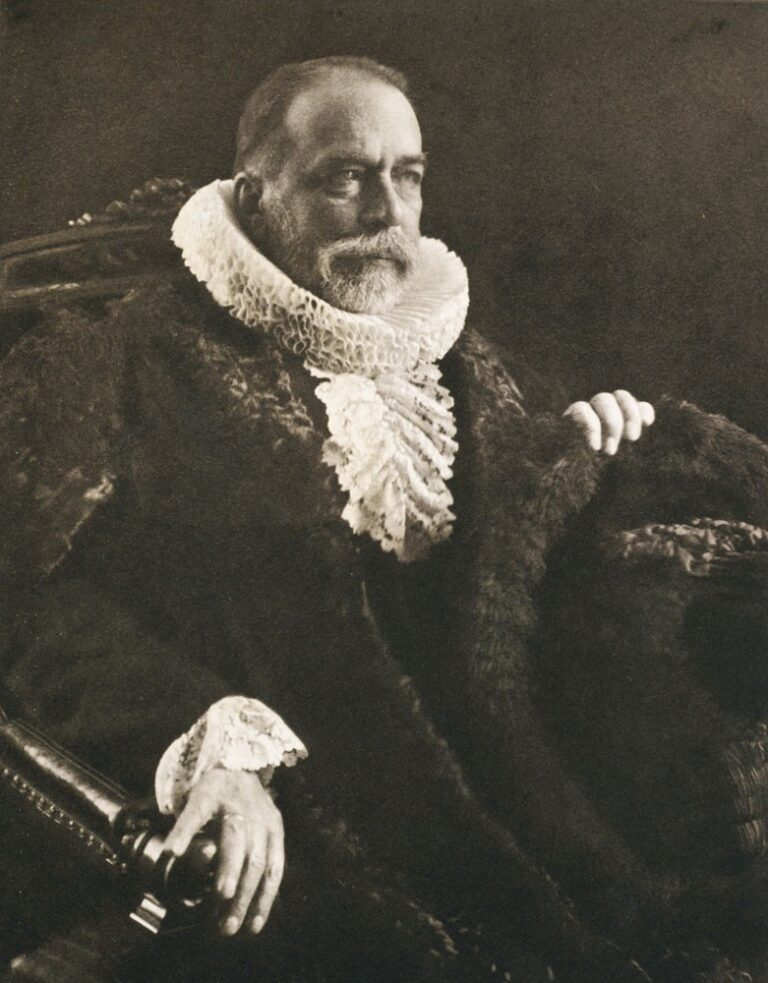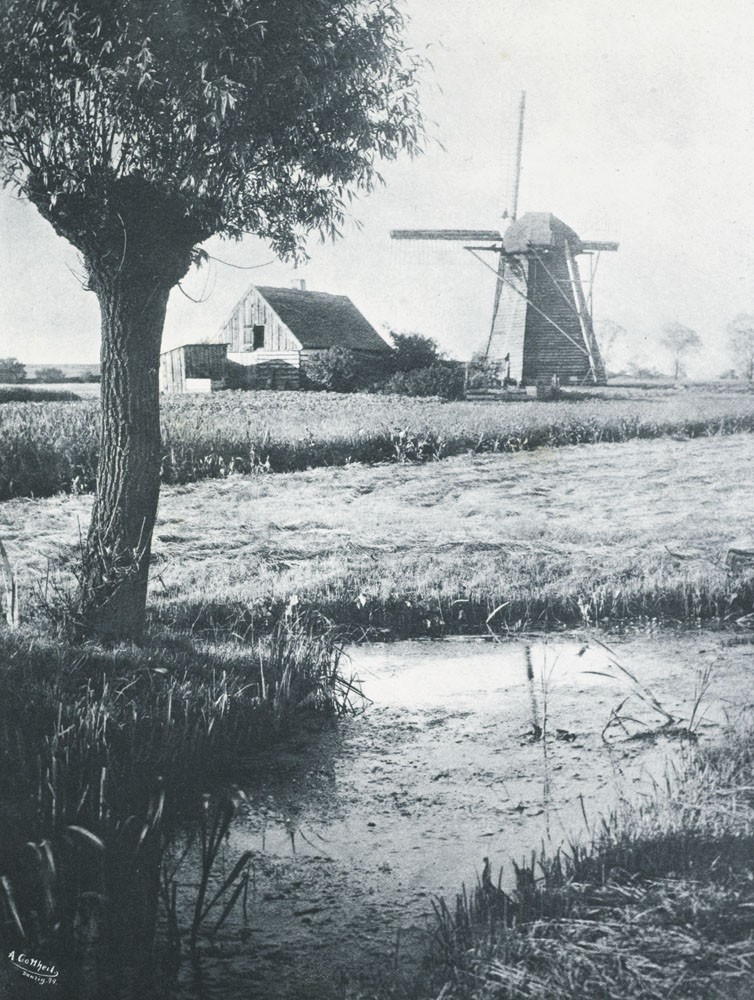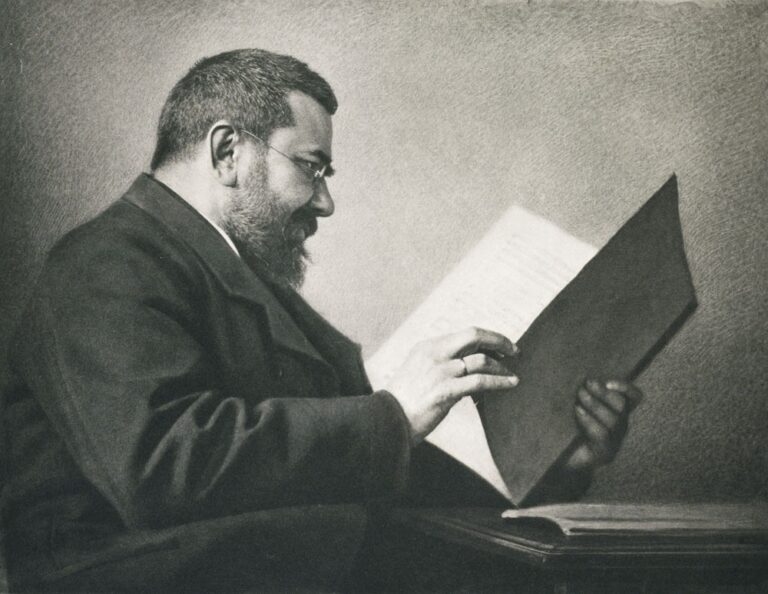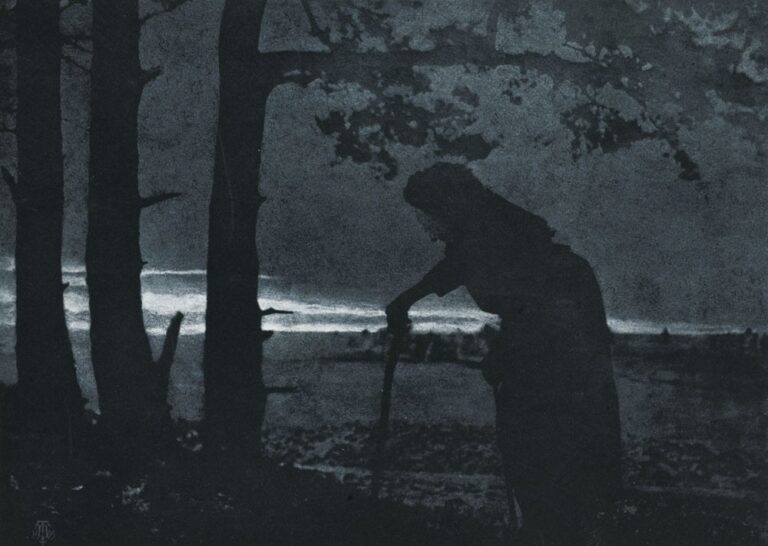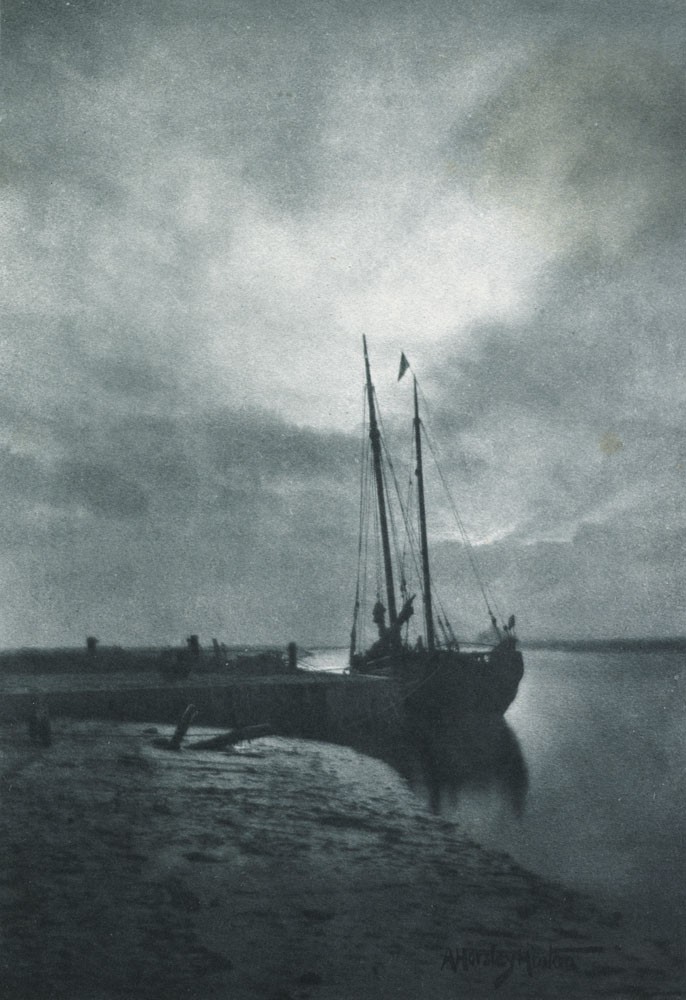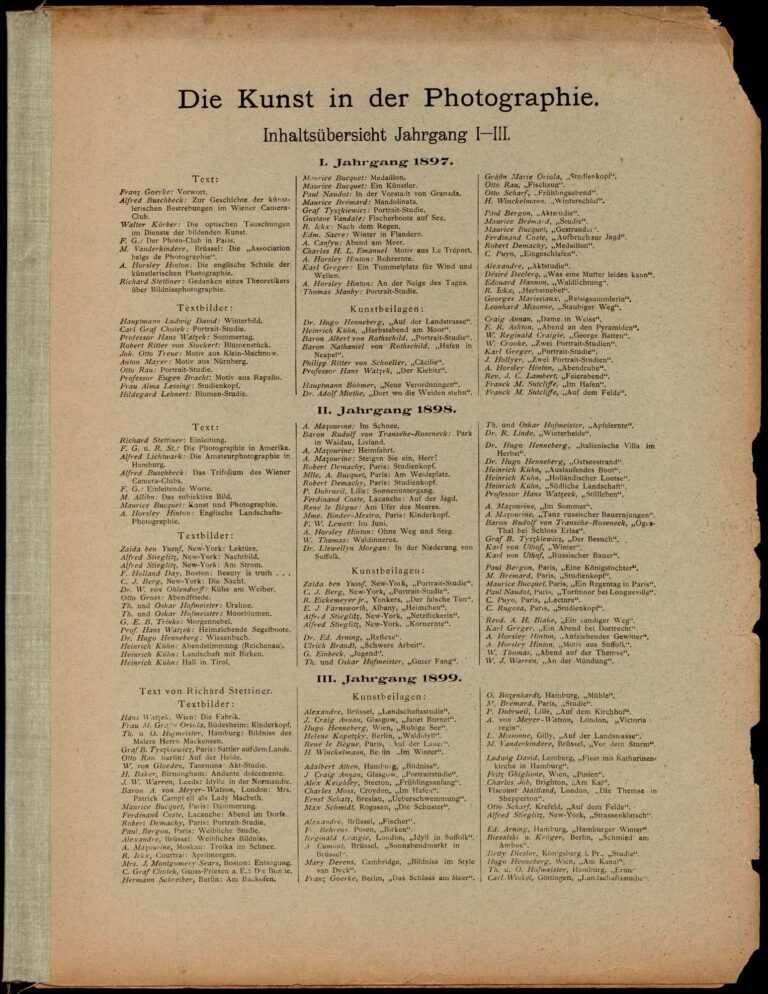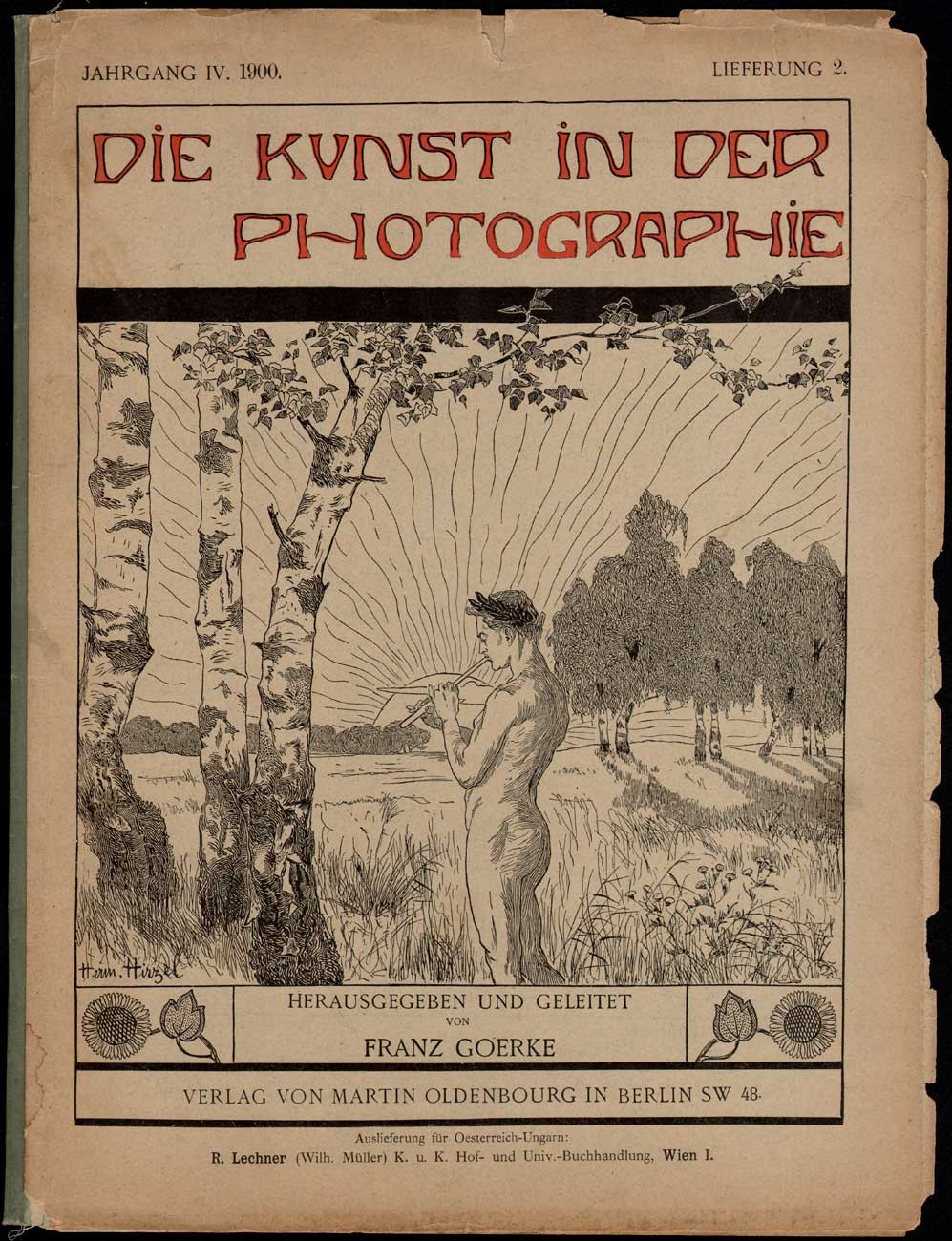
Die Kunst in der Photographie : 1900
Introduction: Die Kunst in der Photographie : 1900
The fourth year 1900 (Vierter Jahrgang) of this journal (Berlin: Verlag Von Martin Oldenbourg) featured 36, large-plate, hand-pulled photogravures issued in six art folios. (loose, including letterpress) These issues reflect the following themes:
1: Reproduces work from the VII International Exhibition of Art Photography held in Hamburg, Germany in 1899.
2: Reproduces work from members of the Society for the promotion of Photography in Leipzig.
3: Reproduces work of French Artistic photography: specifically, René Le Bègue, Paul Bergon, Robert Demachy, Constant Puyo.
4: Reproduces the artistic photographic work of Mrs. Aura Hertwig of Charlottenburg (today, the western district of Berlin in Germany).
5: Reproduces the artistic photographic work of James Craig Annan of Glasgow, Scotland.
6: Reproduces artistic photographic work from several different countries including France, Germany and England.
Letterpress articles are as follows beginning on the appropriate page # followed by author:
1. Alfred Lichtwark, Hamburg: Wohin?
9. Hans Merian, Leipzig: Das malerische Schen in der Photographie.
17. Hildegard Lehnert, Berlin: Das Motiv und seine Behandlung in der künstlerische Photographie.
21. Hildegard Lehnert, Berlin: Künstlerische Photographien von Frau A. Hertwig Charlottenburg.
29. Richard Stettiner, Hamburg: J. Craig Annan.
41. Fritz Matthies-Masuren, München: Zur Entwicklung der Kunstphotographie.
An emphasis on photographic portraiture takes center stage in a higher proportion than previous years of Die Kunst in der Photographie. The tone for this is set in the very first art folio, with the essay by Alfred Lichtwark outlining the history of the photographic portrait and making a case for improving it.
Analysis & Summaries for 1900
Writing in the History of Photography, author and collector Rolf H. Krauss summarizes some of the text articles:
In his article “Wohin?” (Where?) , author and critic Alfred Lichtwark states:
“In the past five years the development of photography as an art form has surpassed all expectations”… “Now we are at the top…It seems to me that our next task is not to press forward, but rather an intense cultivation of this newly conquered art form.”
Krauss comments: In particular, the author pleads for a thorough study of portrait photography. In a few paragraphs he draws up a remarkable brief history of portrait photography, and complains about the enormous sums of money which are spent every year on portraits made by professional photographers. He believes that in a healthy national economy this money should much rather be used for art. Retouched pictures, he says, have spoilt the public’s taste. The translation concludes with an intriguing idea: “The great task faced by amateur societies remains the reform of photographic portraiture.” 1.
Beginning on page nine, author Hans Merian’s article titled: “Das malerische Schen in der Photographie” (roughly: Seeing pictorially in Photography) states:
“A photograph is not, of course, a painting, but is, at its best, a good and useful substitute. Only a painting is regarded as a work of art. He then quotes the French writer and journalist Émile Zola who said a work of art is a piece of nature, “viewed by the artist’s temperament”. The translated abstract by Krauss concludes with an amusing observation by Merian, stating photography is inherently a mechanical process. then says: “Therefore it is not surprising that men of great intellect, authorities in art and science, often display such unintellectual expressions before the lens of the professional photographer”. 2.
Author Hildegard Lehnert contributes two articles for the year. On page #17: “Das Motiv und seine Behandlung in der künstlerischen Photographie” (The Motif and its’ treatment in artistic photography) and another profiling the photographer Aura Hertwig of Charlottenburg: “Künstlerische Photographien von Frau A. Hertwig Charlottenburg”- beginning on page #21. Lehnert goes on to define motif in relation to the fine arts: “that aspect of a natural view which, as a result of certain prominent qualities, draws the greatest visual appeal.” Lehnert also discusses motif in relation to the picture making process and touches on the subjects of nudes: “Nudes are motifs which call for a delicate, calm surrounding, in order to fascinate the eye.” 3.
Lehnert next discusses the work of photographer Aura Hertwig:
“During this spring Mrs. Hertwig’s works were presented to the public for the first time, with the Berlin “Free Photographic Society” arranging the display. These photographs were the result of quiet and private work over two years. We must welcome the fact that another woman has joined the 12 to 15 ladies who have been working as photographers here and abroad. Naturally, she prefers the out-of-focus trend. Despite her unmistakable, characteristic style, some of her pictures are reminiscent of the photographs by Robert Demachy.” 4.
The work of Glasgow photographer James Craig Annan is next discussed by the Hamburg writer Richard Stettiner beginning on page #29 in the letterpress.
An excerpted translation of this appears in author William Buchanan’s book on Annan:
“Only around 1891 did I seriously start to produce original works in the field of photography. When the Linked Ring was founded and its prospectus of the first salon was published, I liked the plan very much and decided to participate. The members of the Ring, who were all total strangers to me, immediately judged my work favourably and accepted it gladly. They felt that our aspirations were the same and we quickly became good friends.”
A short biography is included on Annan- his involvement with the famous family firm of T. & R. Annan & Sons Co. of Glasgow, his connection with David Octavius Hill and aesthetic concerns of Annan are discussed and this observation by Stettiner: “Craig Annan is an artist. Those who wish to speculate in front of his work whether a photographer can be an artist are incapable of the immediate response which should only be followed by critical analysis.” Six large plate Chine-collé photogravures by Annan are included as part of art folio #5 for the year 1900. Stettiner goes on and comments about them: “However we can be proud of the fact that the plates in this article were etched by Annan himself. He is a master of this technique and knows to handle it in the same way as others deal with the bichromate print, thus giving the prints made from his plates the artistic importance of originals.” 5.
Finally, on page #41, Munich writer and photographer Fritz Matthies-Masuren concludes the letterpress to the 1900 volume of Die Kunst in der Photographie with an essay titled: “Zur Entwicklung der Kunstphotographie” (To the development of Art Photography)
A translated excerpt from Krauss:
“We do not strive to turn photography into an art, but to take the development of pictorial photography to the highest conceivable level. Along those lines, exhibitions are the most important means of influencing the public. One should, however, discriminate; only the most valuable work belongs in public exhibitions.” Later, under the heading of “delineating space”, Matthies-Masuren then points to the difficulty of always finding satisfying subjects in nature, and warns against subsequent adjustment of the pictures by means of scissors.” 6.
Notes
1. Rolf H. Krauss: Die Kunst in der Photographie, the German Camera Work: Part 2: Texts in Abstract: History of Photography, Volume 11, Number 1, January-March 1987: p. 6
2. Ibid: p. 8
3. Ibid: pp. 5-6
4. Ibid: p. 6
5. J. Craig Annan: Selected texts and bibliography : Edited by William Buchanan : Clio Press : 1994 : pp. 101-105
6. Rolf H. Krauss: Die Kunst in der Photographie, the German Camera Work: Part 2: Texts in Abstract: History of Photography, Volume 11, Number 1, January-March 1987: p. 8
